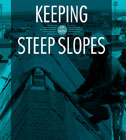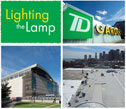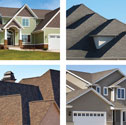Faced rigid board polyisocyanurate insulation is the most popular type of insulation used in low-slope roof systems in the U.S. However, the product's ASTM International standard is confusing and cumbersome, which often results in inadequate or improper specifications. If you are involved with specifying or installing polyisocyanurate insulation, you should be aware of these concerns.
ASTM C1289
The U.S. product standard for faced rigid board polyisocyanurate insulation is ASTM C1289, "Standard Specification for Faced Rigid Cellular Polyisocyanurate Thermal Insulation Board."
ASTM C1289 is divided into seven types identified as Types I through VII. Type I products are faced with aluminum foil and typically are used in wall sheathing applications. Type II products are faced with mat facers and typically are used in low-slope roof systems. Types III through VII products include composite-type polyisocyanurate boards laminated with perlite board, wood fiberboard, oriented strand board, wafer board or glass mat-faced gypsum board and often are used in roof systems.
ASTM C1289, Type II products are further differentiated by four classes—Classes 1 through 4—and three grades—Grades 1 through 3. Class 1 products are faced with fiberglass-reinforced cellulosic felt or uncoated or coated polymer-bonded fiberglass mat; this is the most popular facer class used in the U.S. Class 2 products are faced with coated polymer-bonded fiberglass mats. Class 3 products are faced with uncoated polymer-bonded fiberglass mats. Class 4 products are faced with coated or uncoated polymer-bonded fiberglass mats.
ASTM C1289's grade classifications differ among classes. For Classes 1 through 3, Grades 1 through 3 designate products with 16-, 20- and 25-pounds-per-square-inch (psi) minimum compressive strengths, respectively. For Class 4 products, Grades 1 through 3 designate products with 80-, 110- and 140-psi minimum compressive strengths, respectively.
When specifying faced rigid board polyisocyanurate insulation, it is best to use the ASTM C1289 designation followed by the applicable type, class and grade designations. For example, polyisocyanurate insulation with a cellulose/glass facer having a 20-psi minimum compressive strength is designated as ASTM C1289, Type II, Class 1, Grade 2.
Clarity is needed
ASTM C1289 addresses 18 types of faced rigid board polyisocyanurate insulation products. This large number of products being defined by a single product standard appears to present challenges; many specifiers simply specify "ASTM C1289" instead of the standard's designation followed by the specific type, class and grade classifications necessary to identify the specific product intended. Also, few polyisocyanurate insulation manufacturers include type, class and grade designations in their product literature to adequately differentiate their products.
Also, some of ASTM C1289's facer sheet descriptions seem redundant or lack clarity to adequately differentiate products. For example, ASTM C1289, Type II, Classes 1 and 2 have facers identified as coated polymer-bonded fiberglass mats. ASTM C1289, Type II, Classes 1 and 3 have facers identified as uncoated polymer-bonded fiberglass mats. Although it appears the difference between the two is whether the facers' glass mats are coated or uncoated, it is unclear how polyisocyanurate products identified by these classifications differ from those described by ASTM C1289, Type II, Class 1.
For ASTM C1289 Types III through VII, the standard identifies specific product standards and physical properties applicable to these facers. Product standards and physical properties applicable to the facers on ASTM C1289, Types I and II products are not provided. Such information would help roofing professionals differentiate faced rigid board polyisocyanurate insulation products for specific project conditions.
NRCA has raised these concerns to the ASTM International task force responsible for maintaining ASTM C1289; however, to date, the task force has not addressed these concerns.
Specify carefully
When specifying faced rigid board polyisocyanurate insulation, NRCA recommends specifiers use the ASTM C1289 designation followed by the specific type classification and, if applicable, class and grade classifications necessary to identify the intended products' compressive strength and facers.
Additional information regarding polyisocyanurate insulation and other insulation types used in low-slope roof systems is provided in The NRCA Roofing Manual: Membrane Roof Systems—2011.
Mark S. Graham is NRCA's associate executive director of technical services.



